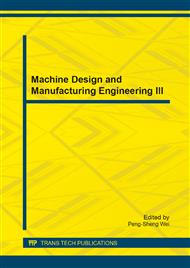p.872
p.877
p.881
p.886
p.894
p.901
p.906
p.909
p.915
Numerical Analysis of the Iced Transmission Line Galloping
Abstract:
By used the assumed mode method to simulate the iced transmission line galloping,with three generalized coordinates to represent the iced transmission line galloping. In order to avoid the complicated calculation of vector,used the Lagrange equation to build the nonlinear equations of iced transmission line from the perspective of energy,used the Runge-Kutta numerical calculation to solve the equations of motion and get the iced transmission line’s across-wind,along-wind and the torsional response. Based on Lyapunov stability theory to deduce the critical wind speed of the iced transmission line galloping. And had used a test iced transmission line to verify the feasibility of the numerical solution and the critical wind speed.
Info:
Periodical:
Pages:
894-900
Citation:
Online since:
July 2014
Authors:
Keywords:
Price:
Сopyright:
© 2014 Trans Tech Publications Ltd. All Rights Reserved
Share:
Citation:


